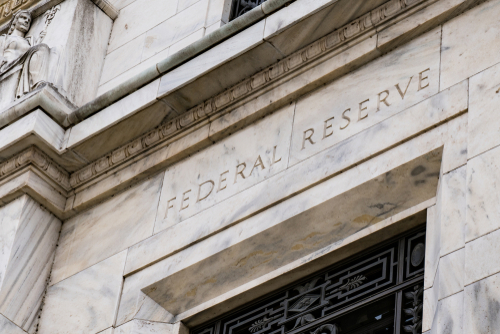Newly introduced legislation in Washington, D.C., aims to improve the effectiveness of the Federal Reserve’s discount window, which helps depository institutions manage their liquidity risks efficiently and avoid actions that have negative consequences for their customers, such as withdrawing credit during times of market stress.

“The Federal Reserve discount window is a critical tool that gives financial institutions of all sizes access to liquidity and prevents panic in the broader financial system,” said Betsy Duke, former governor of the Federal Reserve Board. “Stigma associated with accessing the window and some legacy operational issues have limited the power of this tool and forced the Fed to take dramatic steps to meet recent needs.”
Duke said the proposed bill would help modernize the window “to ensure immediate access by all eligible institutions in today’s lightning-fast financial system.”
U.S. Sen. Mark Warner (D-VA), who sponsored the Discount Window Enhancement Act of 2024, S. 4799, on July 25, said that’s exactly his intention for introducing the bill, which would modernize the discount window liquidity tool and return it to its intended role, which is to help avoid bank runs by making short-term loans to depository institutions, such as commercial and community banks.
“The failures of Silicon Valley Bank (SVB) and Signature Bank last year highlighted the urgent need to reform the Federal Reserve’s discount window for the 21st century economy, where bank runs can occur over hours, rather than days,” said Warner, a member of the U.S. Senate Banking, Housing, and Urban Affairs Committee.
Hal Scott, director of the Program on International Financial Systems at Harvard Law School and director of the Committee on Capital Markets Regulation, said that the 2023 banking crisis and the 2020 COVID crisis each revealed vulnerabilities in the current design of the discount window.
The events of March 2023 in particular showed that bank runs can occur faster than they did in the past, Scott said, noting that SVB experienced a total outflow of 25 percent of deposits in one day.
“Given this, what is needed is an operational system that allows the transfer of collateral and funds at the push of a button,” said Scott. “At the same time, it is also imperative that the Federal Reserve maintain its independence as a liquidity provider to banks, given its clear mandate under Section 10B to act independently. This bill is a foundation in which regulators can build off of to bring the discount window into the 21st century.”
Specifically, S. 4799 would mandate that eligible depository institutions operating in the United States engage in test borrowing at the Federal Reserve’s discount window. Large institutions of more than $100 billion would test quarterly; smaller and larger institutions of $10 billion to $100 billion would do semi-annual testing; and small Institutions under $10 billion would not be in scope, according to a bill summary provided by Warner’s staff.
“My legislation will implement key reforms to make sure that banks can actually use the discount window, reduce the unnecessary stigma associated with that use, and improve the window’s operations to meet the challenges of the digital age,” Warner said. “We need to modernize the window and return this important liquidity tool to its intended role.”
Additionally, the bill would require that regulators “give credit” in their evaluations of bank liquidity preparedness to depositories that can use the discount window successfully, and “positive consideration” would have to be given to successful testing and pre-pledged collateral, the summary says.
Depositories’ liquidity contingency plans also would be required to include detailed policies and procedures for seeking advances under an enacted bill, and must be submitted to the Federal Reserve Board, Regional Federal Reserve Bank of membership, and primary supervisor.
Among other provisions, the proposed measure would require the Federal Reserve Board to modernize discount window operations, and to comprehensively review the weekly reporting of its balance sheet activities while considering changes to avoid market distortions that could inadvertently place individual financial institutions at a disadvantage, states the summary.
The Federal Reserve Board also would have to conduct a study and submit a report to Congress about additional measures that could be taken to reduce discount window stigma and improve the process for obtaining advances on behalf of depository institutions.
“As evident from events in March 2023, it is clear that the current discount window mechanism at the Federal Reserve has deficiencies that have led to severe stigma, increasing the risk of banking panics and deposit runs,” William Dudley, former president of the Federal Reserve Bank of New York, said. “This bill will provide a good basis for regulators to implement operational improvements and reduce frictions that hinder the effectiveness of discount window.”
Greg Baer, president and CEO of the Bank Policy Institute, said S. 4799 would ensure banks are operationally ready to borrow from the discount window to meet liquidity needs. “This is a sensible piece of legislation that seeks to actually respond to the regional banking crisis of March 2023 and help make our financial system work as it is intended,” he said.